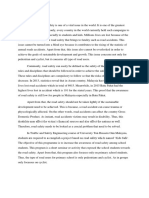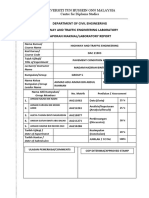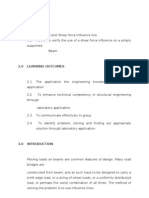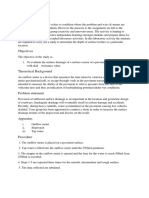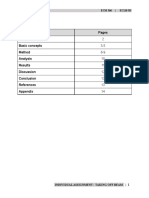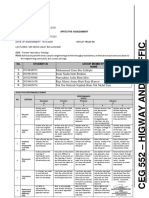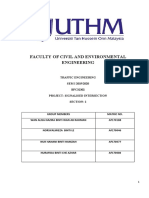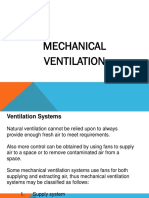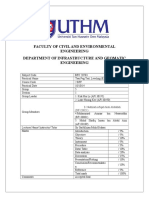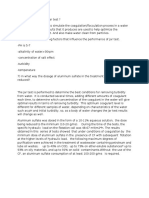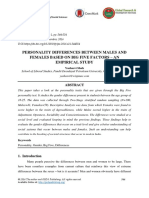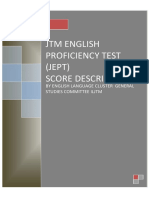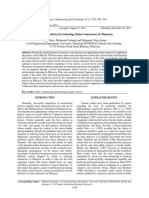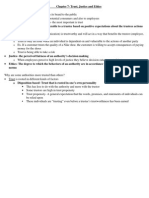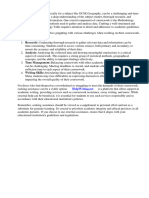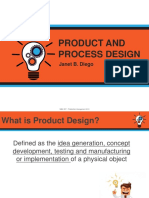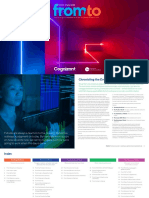FACULTY OF CIVIL AND ENVIRONMENTAL ENGINEERING
DEPARTMENT OF INFRASTRUCTURE AND GEOMATIC ENGINEERING
HIGHWAY LABORATORY
LAB REPORT BFC 32501
EXPERIMENT TITLE
SIGNALISED INTERSECTION CAPACITY AND LEVEL OF
SERVICE AND SPOT SPEED STUDY
BFC 32501
3 MAY 2016
GROUP 10
1. SAIFOL BIN CHE AAFAN (CF140213)
2. MOHAMAD R OSLI BIN ABD RAHIM (CF140177)
3. MOHD AFIQ BIN MOHD ANUAR (CF140247)
4. NUR SYAMIMI BT ZAINOR ARIFFIN (CF140205)
5. NUR AMALINA BT MD ZAKI (CF140106)
6.
7.
COURSE CODE
DATE
GROUP NO.
GROUP MEMBERS
LECTURER/
INSTRUCTOR/ TUTOR
DATE OF REPORT
SUBMISSION
Criteria
Attendance
& Discipline
Aim /
Purpose
Materials
Procedure
Data
9 MAY 2016
2
SCR
WT
Student in laboratory just
before laboratory start
Student in laboratory 10
minutes earlier
- Purpose is identified
- Relevant variables are
described
- Purpose is clearly identified
- Relevant variables are
described
Most lab materials
included
All necessary lab
materials included and
listed
All necessary lab materials
included and listed in an
organized manner
Procedures are not
listed
Procedures are listed but
not in clear manner
All necessary lab
materials included but
not listed in any
particular order
Procedures are listed in
clear steps but not
numbered and/or
complete sentences
- Procedures are listed in
clear steps
- Each steps is
numbered and in a
complete sentence
- Good representation of
the data using tables or
graphs
- Less than 15%
difference with accepted
values
- Precision is acceptable
- Trends / patterns are
logically analyzed for the
most part
- Questions are
answered in complete
sentences
- Analysis is general
A statement of the results
of the lab indicates
whether result support
the hypothesis
- Accurate representation
of the data using tables
or graph
- Data is fairly precise
- Less than 10%
difference with accepted
values
- Trends / patterns are
logically analyzed
- Question are answered
in complete sentences
- Analysis is thoughtful
- Procedures are listed in clear
steps
- Each step is numbered and in
a complete sentence
- Diagram are included to
describe the set-up
- Accurate representation of
the data using tables or graphs
- Graphs and tables are
labeled and titled.
- Data is precise with less than
5% difference with accepted
values.
- Trends / patterns are logically
analyzed
- Question are answered
thoroughly and in complete
sentences
- Analysis is insightful
Did the job but did not
appear to be very
interested. Focus lost on
several occasion
Student can answer
questions and begin to
make connections
between the experiment
& application
Used time pretty well.
Stayed focused on the
experiment most of the
time
Student can explain the
result in detail and the
ways in which they relate
to the research focus
- Trends / patterns
are not analyzed
- Questions are not
answered
- Analysis is not
relevant
- Trends / patterns are
not analyzed
- Answer to questions are
incomplete
- Analysis is inconsistent
No discussion was
included or shows
little effort and
reflection on the
lab
A statement of the results
is incomplete with little
reflection on the lab
Participation
(during
experiment)
Student was
hostile about
participation
Participation was minimal
Interview or
quiz
Student cannot
answer questions
about the
experiment
Student can answer
some questions
Total score
Student in laboratory
within 10 to 30 minutes
late
- Purpose is identified
- Relevant variables are
described in somewhat
unclear manner
- Data lacks precision
- Greater than 20%
difference with accepted
values
Discussion
Student in laboratory
within 30 minutes to 1
hour late
- Purpose is somewhat
vague
- Relevant variable are
not described
Data not
represented or is
not accurate
Analysis /
Result
Student in
laboratory more
than 1 hour late
- Purpose is not
identified
- Relevant
variables are not
described
There is not a list
of the necessary
lab materials
- Accurate statement of
the results of the lab
indicates whether result
support the hypothesis
- Possible sources of
error identified
- Accurate statement of the
results of the lab indicates
whether result support the
hypothesis
- Possible sources of error and
what was learned from the lab
discussed
Showed interested, used time
very well, guide other students
and very focused on the
experiment
Student can explain the results
in detail and the ways in which
they relate to the research
focus. Student can also
evaluate the significance of the
experiment to real situation
TSCR
(%)
�EXAMINER COMMENTS:
APPROVAL STAMP
�STUDENT CODE OF ETHIC
(SCE)
DEPARTMENT OF INFRASTRUCTURE AND GEOMATIC ENGINEERING
FACULTY OF CIVIL AND ENVIRONMENTAL ENGINEERING
I, hereby confess that I have prepared this report on my own effort. I also admit
not to receive or give any help during the preparation of this report and pledge
that everything mentioned in the report is true.
____________________
Name: Saifol bin Che Aafan
No.matrix: CF140213
Date: 9 May 2016
____________________
Name: Nur Amalina bt Md Zaki
No.matrix: CF140106
Date: 9 May 2016
____________________
Name: Mohd Afiq bin Mohd Anuar
No.matrix: CF140247
Date: 9 May 2016
____________________
Name: Mohamad Rosli bin Abd Rahim
No.matrix: CF140177
Date: 9 May 2016
____________________
Name: Nur Syamimi Bt Zainor Ariffin
No.matrix: CF140205
Date: 9 May 2016
�1.0 INTRODUCTION
The capacity of a street is related primarily to the signal timing and the geometric
characteristics of the facility as well as to the compositon of traffic on the facility.
Geometrics are a fixed characteristics of a facility. Thus, while trag]ffic composition may
vary somewhat over time, the capability of a facility is generally a stable value that can be
significantly improved only by initialing geometric improvements.
At signalised intersections, the additional element of time allocation is introduced into the
concept of capacity. A traffic signal essentially allocates time among conflicting traffic
movements that seek to use the same space. The way in which time is allocated
significantly affects the operation and the capacity of the intersection and its approaches.
In analysing a signalised intersection, the physical unit of analysis is the lane group. A
lane group consists of one or more lanes on an intersection approach. The outputs from
application of the method in this manual are reported on the basic of each lane group.
Capacity at intersections is defined for each lane group. The lane group capacity is the
maximum hourly rate at which vehicles can reasonably be expected to pass through the
intersection under prevailing traffic, roadway, and signalization conditions. Capacity is
stated in vehicles per hour (veh/h).
The level of service (LOS) at signalised intersections is expressed in terms of delay, which
relate to control, geometrics, traffic and incidents.
Stopped delay may be used to determine the LOS. It is defined as the time a vehicle waits
at a traffic light. Stopped delay stated in seconds per vehicles (sec/veh).
2.0 OBJECTIVE
To determine the capacity and level of service of the UTHM signalised intersections using
JKR Arahan Teknik (Jalan) 13/87 procedure.
�3.0 APPARATUS / EQUIPMENT
1. Measuring Tape / Odometer
2. Stopwatch
3. Analog Counter (optional)
4. Safety Vest
5. Safety Cones
6. Flags
4.0 PROCEDURES
1. A traffic movement been counted at each approach for one hour in segments of 15
minutes have been conducted. The data have been recorded in tables 1 6.
2. The lane width, W (in meter) had been measured for each approach and recorded
in Table 7.
3. For each phase, the green time, g (sec) and cycle time, C (sec) have been
measured. Then the data recorded in Table 8.
4. Traffic volumes that been recorded in Tables 1 6 to passenger car unit (p.c.u.)
must be converted. This is taken as the design flow, q (pcu/hr) which will then be
used in Table 7.
5. The saturation flow, S (pcu/hr) for each approach and transfer the values to Table 7
been determined.
6. By using Table 7, y have been computed, which is the ratio of design flow to
saturation flow and the Y value is determined, which is the total value of y for each
approach.
7. Then, the inter-green time is calculated, I (sec) and total lost time per cycle L (sec),
8. The practical capacity, Yprac and reserve capacity, RC of the intersection had been
determined.
9. Then the average stopped delay per vehicle, d (sec) and level of service for each
approach is determined.RESULT
�5.0 DATA AND CALCULATION
Table 1
Approach (Movement) : PARIT RAJA (RIGH-TURN)
Day/ Date: Tuesday/3 May 2016
Time
Lane : 1
Weather : cloudy
Traffic Count
Vehicle Class
1
5
5
5
5
5
5
5
2
5
5
5
3
5
5
1
15
5
5
1
5
5
5
5
5
5
5
4
5
5
5
5
5
5
30
5
5
5
5
3
5
5
4
5
5
5
5
5
5
5
2
5
5
5
5
5
1
5
5
45
60
Vehicle Class
Class 1 (Motorcycles)
Class 2 (Cars)
Class 3 (Vans&Medium Truck)
Class 4 (Heavy Truck&Buses)
Total (PR1)
Traffic Volume
(veh/hour)
106
160
23
5
294
Table 3
p.c.u
Factor
0.33
1.00
1.75
2.25
p.c.u
34.98
160.00
40.25
11.25
246.48
�Approach (Movement) : PARIT RAJA (THROUGH)
Day/ Date: Tuesday/3 May 2016
Time
Lane : 3
Weather : cloudy
Traffic Count
Vehicle Class
5
5
5
1
5
5
2
5
5
5
5
5
4
5
5
5
5
5
5
5
5
5
5
3
5
5
15
30
45
5
5
5
5
5
5
5
5
5
5
5
2
5
5
5
5
5
5
5
5
5
5
5
5
5
5
5
5
5
5
5
5
5
5
5
5
5
5
5
5
5
5
2
5
5
5
5
5
5
5
5
5
5
5
5
5
5
3
5
5
5
5
5
5
5
5
5
5
5
5
5
5
5
5
5
5
5
5
5
5
5
5
5
5
5
5
5
5
5
5
5
5
5
5
5
5
5
5
5
5
5
4
5
5
5
3
5
5
5
5
5
5
5
5
5
5
5
5
5
5
5
5
5
5
5
5
5
1
5
5
5
5
5
5
5
5
5
5
5
5
5
5
3
5
5
5
5
5
5
4
5
5
�5
5
60
5
5
5
5
5
5
5
5
5
5
5
5
5
5
5
5
5
5
5
5
Vehicle Class
Class 1 (Motorcycles)
Class 2 (Cars)
Class 3 (Vans&Medium Truck)
Class 4 (Heavy Truck&Buses)
Total (PR1)
5
5
5
5
5
5
5
5
5
5
5
5
5
5
5
2
5
5
5
5
5
5
5
5
5
5
5
5
5
5
5
5
5
Traffic Volume
(veh/hour)
164
837
168
45
1214
Table 5
5
5
5
5
p.c.u
Factor
0.33
1.00
1.75
2.25
p.c.u
54.12
837
294
101.25
1286.37
�Approach (Movement) : UTHM (RIGH-TURN)
Day/ Date: Tuesday/3 May 2016
Time
Lane : 1
Weather : cloudy
Traffic Count
Vehicle Class
1
5
5
5
5
5
5
5
5
2
5
5
5
5
15
5
5
5
5
5
5
5
5
5
5
5
5
1
5
5
30
5
5
1
5
5
5
5
5
5
5
5
5
5
5
5
5
4
5
5
5
5
5
2
5
5
5
5
5
5
5
5
5
5
5
5
5
5
5
5
5
5
5
5
5
5
2
5
5
5
5
5
5
5
5
5
5
5
5
5
5
5
5
5
45
60
Vehicle Class
Class 1 (Motorcycles)
Class 2 (Cars)
Class 3 (Vans&Medium Truck)
Class 4 (Heavy Truck&Buses)
Total (PR1)
5
5
5
5
Traffic Volume
(veh/hour)
175
292
10
8
485
Table 7
p.c.u
Factor
0.33
1.00
1.75
2.25
p.c.u
57.75
292
17.5
18.00
385.25
�Approach (Movement) : BATU PAHAT (U-TURN)
Day/ Date: 3 May 2016
Time
Lane : 1
Weather : cloudy
Traffic Count
Vehicle Class
1
2
5
5
2
5
5
15
2
5
5
5
5
5
4
5
5
5
5
5
5
5
5
5
3
30
45
60
Vehicle Class
Class 1 (Motorcyles)
Class 2 (Cars)
Class 3 (Vans & Medium Tracks)
Class 4 (Heavy Trucks & Buses)
Total (BU1)
Traffic
Volume
(veh/hr)
17
109
14
0
140
Table 9
p.c.u Factor
p.c.u
0.33
1.00
1.75
2.25
5.61
109
24.5
0
139.11
�Approach (Movement) : BATU PAHAT (THROUGH)
Day/ Date: 3 May 2016
Time
Lane : 3
Weather : cloudy
Traffic Count
Vehicle Class
1
5
5
5
5
5
5
5
4
5
5
5
5
5
1
5
5
5
5
5
5
5
5
5
5
5
5
5
5
5
5
5
5
5
5
5
5
5
5
5
5
5
5
5
5
5
5
5
5
5
5
5
5
5
5
5
5
5
5
5
5
5
5
1
5
5
5
5
5
5
5
5
5
5
5
5
5
5
5
5
5
5
5
5
5
5
5
5
5
5
5
5
5
5
5
5
1
5
5
5
5
5
5
5
5
5
5
5
5
5
5
5
5
5
5
45
5
5
4
5
5
5
5
5
5
5
5
5
5
5
5
5
5
5
5
5
5
5
5
5
5
5
5
5
5
5
5
5
5
5
5
5
5
5
4
5
5
5
5
5
60
5
5
3
5
5
5
5
5
5
5
5
5
5
5
5
5
5
5
5
5
5
5
5
5
5
5
5
5
5
5
5
5
5
5
5
5
5
4
5
5
5
5
5
5
5
5
5
5
5
5
5
5
3
5
5
15
30
Vehicle Class
Class 1 (Motorcyles)
Class 2 (Cars)
Class 3 (Vans & Medium Tracks)
Class 4 (Heavy Trucks & Buses)
Total (BU1)
Traffic
Volume
(veh/hr)
122
905
98
63
1188
Table 11
5
5
5
5
5
5
5
3
5
5
5
2
5
5
1
5
5
5
4
p.c.u Factor
p.c.u
0.33
1.00
1.75
2.25
40.26
905
171.5
141.75
1258.51
�Phase
Movemen
t
W(m)
S*(pcu/hr
)
q(pcu/hr)
y=q/S*
y
II
PT2
BT3
PT2
PR1
PR1
4.2
1337.3
4.2
1337.3
4.2
1337.3
4.2
1337.3
4.2
1337.3
1287
0.96
1259
0.94
1287
0.96
0.94
247
0.18
0.96
247
0.18
III
BU1
4.2
1337.3
139
0.10
0.18
KEY:
P=Parit Raja Approach ;B= Batu Pahat Approach; U=UTHM Approach ;T=Through
R=Right-turn; L=Left-Turn ;I =Lane 1 ; 2=Lane 2;3 = Lane 3; 4 = lane 4
Y
= y1 + y2 + y3 + y4
= 0.94 + 0.96 + 0.18 + 0.29
= 2.37
Amber time, a
= 3sec
All-red period, R
= 2sec
Intergreen time, I
=a+R
=3+2
= 5sec
Drivers reaction time, l = 2sec
Number of phases, n = 4
Total lost time, L
= n(l-a) + nl
= 4(5-3) + 4(5)
= 28 sec
Practical capacity, Y prac = 0.9 - 0.0075L
= 0.9 0.0075(28)
= 0.69
Reserve capacity, RC
= 100% x (Yprac - Y) / Y
100 x (
= 70%
2.370.69
)
2.37
IV
UR
4.2
1337.3
386
0.29
0.29
��Sadj = S Fg Fr Fl Ft
S= 2075 (W<4.25)
Fg=1.0 *0% gradient
Ft=0.90
Fr=0.77
Fi=0.93
Sadj = 2075 1.0 0.77 0.93 0.9 = 1337.3
Phase
Movement
C (sec)
g (sec)
= g/C
S (pcu/hr)
q(pcu/hr)
qs(pcu/sec)
x = q/S
d(sec)
LOS
d=
PT2
BT3
PT2
PR1
UR
41
82
2.00
64
16
0.25
74
37
0.5
74
37
0.5
74
37
0.5
1337.3
1287
1337.3
1259
1337.3
1287
1337.3
247
1337.3
247
1337.3
139
1337.3
386
0.36
0.49
29.86
D
0.35
1.2
17.9
C
0.36
0.49
28.03
D
0.07
0.8
39.8
D
0.07
0.38
24.5
C
0.04
0.22
10
B
0.11
0.15
9.1
B
2
9 C (1)
x2
+
10 2(1x ) 2 q s ( 1x )
BU1
62
49
0.79
BT3
d=
PR1
41
82
2.00
62(10.79)2
9
1.22
+
=17.9
10 2(10.79(1.2)) 2( 0.35) ( 11.2 )
�SKETCH OF UTHM INTERSECTION
Sketch of Phase Diagram
Phase
Movemen
t
PT2
II
BT3
PT2
III
PR1
PR1
IV
BU1
UR
�6.0 DISCUSSION
After done this experiment, our group completely get the value of
transportation that use infront UTHM which are from Parit Raja (Right-Turn), Parit
Raja (Through), UTHM (Right-Turn), Batu Pahat (U-Turn) and Batu Pahat (Through).
In each of the direction, our group has been recorded in 1 hour at the same time.
From the data that has been collected at Parit Raja (Right-Turn) shows that, the
volume for all vehicle class of traffic during 1 hour period is 294 and the value of
p.c.u. (passenger car unit) is 246.48. Then, the traffic volume data from Parit Raja
(Through) is 1214 and their p.c.u is 1286.37. Next is the traffic volume from
UTHM (Right-Turn) 485 and the value of p.c.u is 385.25. other than that, the value
of traffic volume of Batu Pahat (U-Turn) is 140 and the value of p.c.u is 139.11
and the last data of traffic volume of Batu Pahat (Through) is 1188 and the p.c.u
value is 1258.51.
From the data shows that the highest value is from Parit Raja (Through)
which is 1214 and their p.c.u value is 1286.37. It shows that, during this period of
time, the road users is greater compare to others direction. Besides, from this
direction, our group think the value of traffic become highest because majority of
road user has been done their matter for example their are many of facilities that
have in Parit Raja likes school, factory, police station, clinic, bank and others.
From that, certainly shows that, the road users are not stayed in this particular
town. Secondly the data shows that, Batu Pahat (Through) is 1188 and the p.c.u
value is 1258.51. From this two direction, mostly it become the busy road
according to the data that has been collected. Thats why, this two direction
provided 3 lane to road users. Next was the data from UTHM (Right-Turn) which is
485 and the value of p.c.u is 385.25. On this road, only students, staff and others
people that has their business are used it. So, the value of traffic not become the
high value. Parit Raja (Right-Turn) data shows that only 294 and the value of
p.c.u. (passenger car unit) is 246.48 has been recorded. Its maybe only student
and staff that uses in this period of time.
Lastly is, data from Batu Pahat (U-Turn) which is 140 and the value of p.c.u
is 139.11. This value become the lowest traffic volume in 1 hour period of time,
and the reason why the data become the lowest is because the road user
majority from Batu Pahat starting from Kolej Kementerian Tinggi Mara does not
have the U-Turn space and only infront of UTHM the road users can do the U-Turn.
�7.0 CONCLUSION
This experiment contains a methodology for analyzing the capacity and level of
service (LOS) of signalized intersctions. The analysis must consider a wide variety prevailing
conditions, including the amount and distribution of traffic movements, traffic composition,
geometric characteristics and details of intersection signalization. In this experiment, we
know that level of service is the average control delay per vehicle that estimated for each lane
group and aggregated for each approach and for the intersection as a whole. Level of Service
(LOS) is directly related to the control delay value. This experiment also determining the
capacity. Capacity at signalized intersections is based on the concept of saturation flow and
saturation flow rate. And the control delays includes movement at slower speeds and stops on
intersection approaches as vehicles move up in queue position or slow down upstream of an
intersection. Many of the intersections analyzed in the study area operate at an acceptable
level of service.
Intersection LOS is directly related to the average control delay per vehicle. Once
delay have been estimated for each lane group and aggregated for each approach and the
intersection, the appropriate LOS is determined. This result have explained the volume
capacity ratios for each lane group and for all the critical lane groups within the intersection
as a whole, and average control delays for each lane group and approach for the intersection
as a whole along with corresponding LOS.
8.0 REFERENCE
http://fib.bme.hu/proceedings/styevola.pdf
http://atrf.info/papers/2009/2009_chaudry_ranjitkar.pdf
http://www.ci.seatac.wa.us/Modules/ShowDocument.aspx?documentid=11371
https://www.civil.iitb.ac.in/tvm/1111_nptel/574_SignalLos/plain/plain.html



